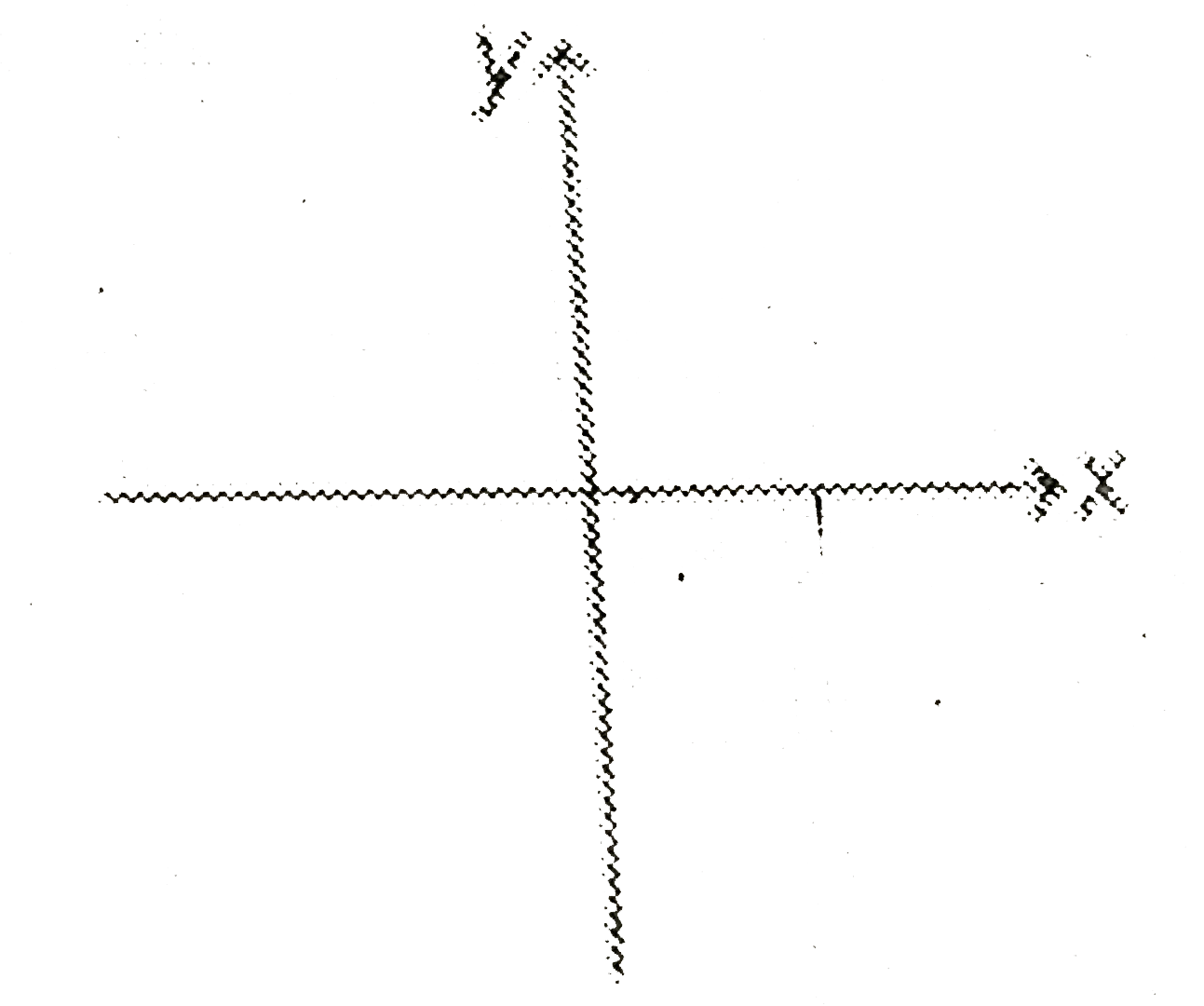The coordinates of a particle of mass 'm' as function of time are given by x=x0+a1cos(ωt) and y=y0+a2sin(ω2t). The torque on particle about origin at time t=0 is :
(ma1ω21x0)k^
(ma1ω21x20)k
(ma1ω21y0)k
(ma1ω21x0y0)k
The correct Answer is:C
To solve the problem, we need to find the torque on a particle about the origin at time t=0. The coordinates of the particle are given as:
x=x0+a1cos(ωt)
y=y0+a2sin(ω2t)
Step 1: Determine the position vector R at t=0
At t=0:
x(0)=x0+a1cos(0)=x0+a1
y(0)=y0+a2sin(0)=y0
Thus, the position vector R at t=0 is:
R=(x0+a1)^i+y0^j
Step 2: Find the velocity vector V
To find the force, we first need the acceleration. We start by finding the velocity vector V by differentiating the position vector with respect to time:
dxdt=−a1ωsin(ωt)
dydt=a2ω2cos(ω2t)
Thus, the velocity vector V at t=0 is:
V(0)=−a1ωsin(0)^i+a2ω2cos(0)^j=0^i+a2ω2^j=a2ω2^j
Step 3: Find the acceleration vector A
Now, we differentiate the velocity vector to find the acceleration vector A:
d2xdt2=−a1ω2cos(ωt)
d2ydt2=−a2ω22sin(ω2t)
At t=0:
A(0)=−a1ω2cos(0)^i−a2ω22sin(0)^j=−a1ω2^i+0^j=−a1ω2^i
Step 4: Find the force vector F
Using Newton's second law, F=mA:
F=m(−a1ω2^i)=−ma1ω2^i
Step 5: Calculate the torque τ
The torque τ about the origin is given by:
τ=R×F
Substituting the values of R and F:
R=(x0+a1)^i+y0^j
F=−ma1ω2^i
Now, we compute the cross product:
τ=∣∣
∣
∣∣^i^j^kx0+a1y00−ma1ω200∣∣
∣
∣∣
Calculating the determinant:
τ=^k((x0+a1)(0)−(y0)(−ma1ω2))=ma1ω2y0^k
Final Answer
Thus, the torque on the particle about the origin at time t=0 is:
τ=ma1ω2y0^k
y=y0+a2sin(ω2t)
y(0)=y0+a2sin(0)=y0
dydt=a2ω2cos(ω2t)
d2ydt2=−a2ω22sin(ω2t)
F=−ma1ω2^i
∣
∣∣^i^j^kx0+a1y00−ma1ω200∣∣
∣
∣∣
Topper's Solved these Questions
Similar Questions
A particle of mass m is moving along a trajectory given by
x=x0+acosω1t
y=y0+bsinω2t
The torque, acting on the particle about the origin, at t=0 is:
View SolutionA particle of mass 0.2 kg moves along a path given by the relation : →r=2cosωtˆi+3sinωtˆj. Then the torque on the particle about the origin is :
View Solution
Knowledge Check
The co-ordintes of a mving particle at any time t are given by
x=ct2andy=bt2
The Speedof the particle is given byAt(c+b)B2t√(c2−b2)Ct√(c2+b2)D2t√(c2+b2)The co-ordinates of a moving particles at time t, given by x=at2,y=bt2. The speed of the particle is
A2(a+b)tB(a2+b2)1/2 tC2(a2+b2)1/2tD(a+b)t
The co-ordinates of a moving particle at any time t are given by x=ct2andy=bt2The speed of the particle is
View SolutionThe coordinates of a moving particle at any time t are given by x=ct and y=bt2. The speed of the particle is given by
View SolutionTwo coherent waves are represented by y1=a1cosω t and y2=a2sinωt. The resultant intensity due to interference will be
View SolutionA xandy co-ordinates of a particle are x=Asin(ωt)andy=Asin(ωt+π/2). Then, the motion of the particle is

View SolutionThe coordinates of a moving particle at any time t are given by, x=2t3 and y=3t3. Acceleration of the particle is given by
View SolutionThe x and y coordinates of a particle at any time t are given by x=2t+4t2andy=5t , where x and y are in metre and t in second. The acceleration of the particle at t = 5 s is
View Solution
